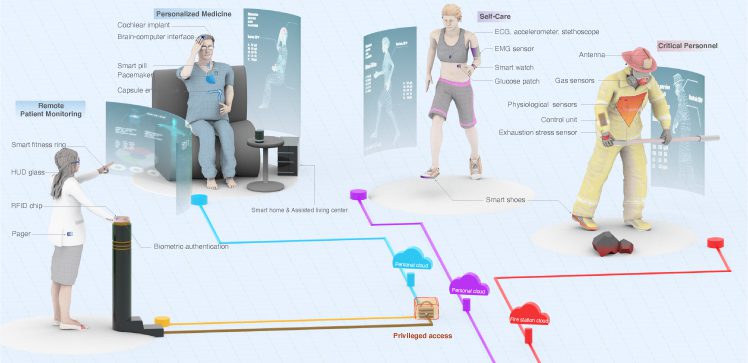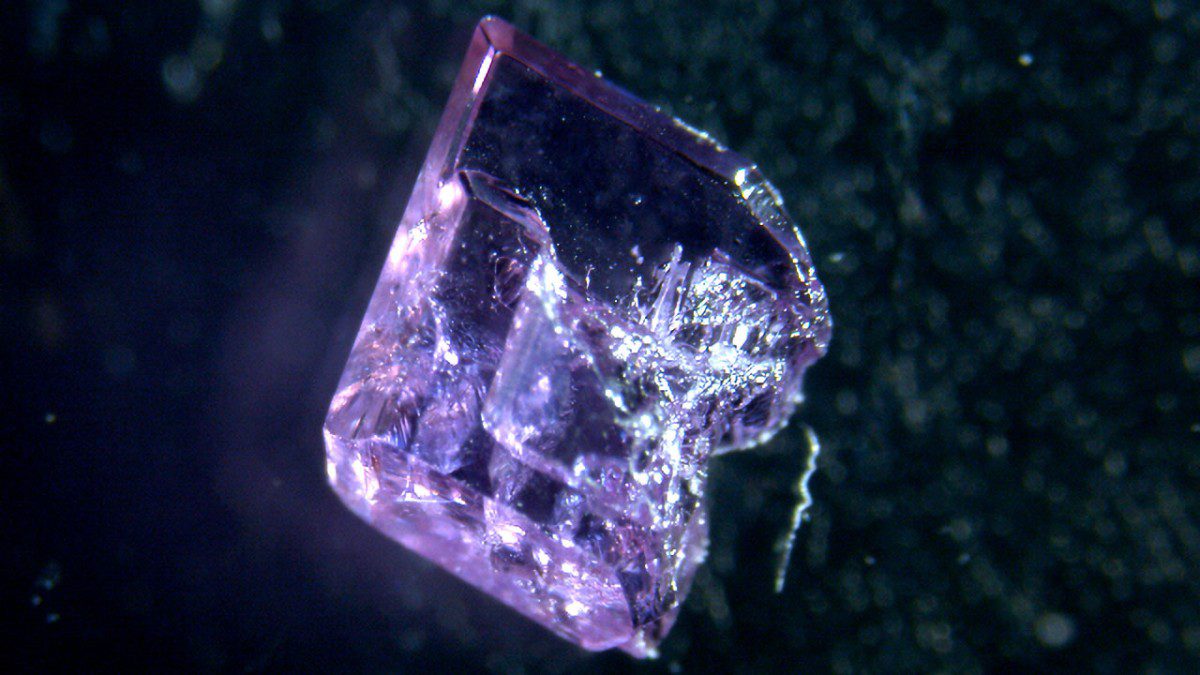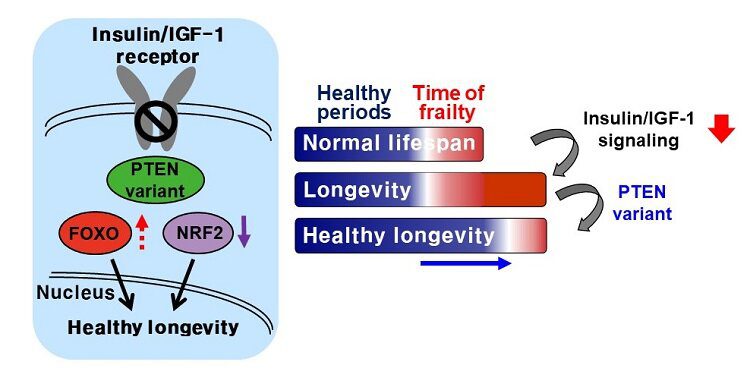
The internet of bodies (IoB) is a network of wearable, implantable, ingestible and injectable smart objects that allows for in-, on- and off-body communications.
Human body communication (HBC) that takes advantage of the mostly conductive features of body tissues can provide highly secure and power-efficient data transmission among wearable, implanted and ingested medical devices, KAUST researchers have shown1. The findings open the way for the interconnection of long-lasting wireless devices as the foundation for the internet of bodies (IoB).
The internet of things (IoT) is a technology framework in which a myriad of devices can be interconnected to provide seamless functionality and unprecedented depth of data on the world around us. Autonomous vehicles and smart homes, for example, rely on IoT technologies for monitoring and control. But what if the same idea could be applied to monitoring our own bodies and alerting us to health signals? That is the concept behind the IoB.
“The IoB is a network of wearable, implantable, ingestible and injectable smart objects that allows for in-, on- and off-body communications,” says Ahmed Eltawil. “For example, smartwatches, smart shoes, pacemakers and cochlear implants could be interconnected to monitor our biomarkers.”
However, interconnecting these devices using radio waves like those used in Wifi networks — the conventional go-to technology for such applications — can produce stray outward signals that could allow eavesdropping or biohacking, as well as using excess energy.
Through a systematic investigation of potential IoB interconnection technologies1,2, Eltawil and colleagues Abdulkadir Celik, Abeer Alamoodi and Khaled Salama revealed HBC to be the most promising.
“HBC uses harmless tiny electrical signals to transmit data through conductive body tissue,” says Celik. “Not only does HBC use a thousand times less energy per bit than radio, it also benefits from much better channel quality.”
The potential of HBC is not just limited to interdevice networking, however; due to the unique conductance characteristics of each person, the technology could also be used for bioauthentication, just like a fingerprint.
“Imagine a scenario where simply touching a car steering wheel or the keys on your laptop can continuously authenticate that you are the owner,” says Celik.
The researchers suggest that IoB using human body channels could be a disruptive technology in many sectors, such as personalized healthcare, remote patient monitoring, smart homes, assisted independent living, occupational health and safety, fitness, sport and entertainment.
“While numerous technical challenges still need to be addressed, such as developing robust, seamless interfaces between the sensor and the human body, HBC certainly opens the possibility of realizing extremely compact, cheap, low-power body sensors,” Eltawil says.
Original Article: Connect the internet of bodies
More from: King Abdullah University of Science and Technology
The Latest Updates from Bing News & Google News
Go deeper with Bing News on:
Internet of bodies
- Israel debunks ‘Hamas libels‘ about mass grave spread by media for internet clicks, says Netanyahu spokesman
Amid Israel’s campaign to root out Hamas terrorists in Gaza, the terrorist organization is stoking “disinformation" to hoodwink the international community, claim critics.
- 'He doesn't care about anyone': Internet agrees as Cassidy Hutchinson says Trump loyalists are becoming 'bodies around him'
Former White House aide Cassidy Hutchinson talked about Trump's unwillingness to let go of power and how he takes out everybody who is loyal to him ...
- Elon Musk plots UK boost for space-beamed internet service as SpaceX prepares to launch thousands of extra satellites
ELON Musk is plotting a UK boost for his space-beamed internet service as SpaceX prepares to launch thousands of extra satellites. Starlink’s network of satellites are designed to provide internet ...
- ‘It interprets them as a sabre-toothed tiger’: How cortisol actually deals with daily stressors in our bodies
For whatever reason, finding ways to control the “stress hormone”, as it’s often called, has become the internet’s golden ticket to optimal ... is stimulated to release cortisol, keeping the body on ...
- New York police search of Long Island forest could be linked to Gilgo Beach murders
Police K-9 units were searching a wooded are in New York this week as the investigation into the Gilgo Beach murders continues after charges in just 4 of 11 cases.
Go deeper with Google Headlines on:
Internet of bodies
[google_news title=”” keyword=”internet of bodies” num_posts=”5″ blurb_length=”0″ show_thumb=”left”]
Go deeper with Bing News on:
IoB
- IO Biotech Announces Abstract Accepted for Presentation at the 2024 American Society of Clinical Oncology (ASCO) Annual Meeting
IO Biotech (Nasdaq: IOBT), a clinical-stage biopharmaceutical company developing novel, immune-modulating therapeutic cancer vaccines based on its T-win ® platform, today announced the acceptance of ...
- IOB Nachalur IFSC Code: IOBA0000611
Address, MICR code, branch contact number etc of IOB Nachalur branch is given below. You may contact the branch or the Customer Care number of the bank information relating to your Indian Overseas ...
- IOB Borkuchi IFSC Code: IOBA0003521
Address, MICR code, branch contact number etc of IOB Borkuchi branch is given below. You may contact the branch or the Customer Care number of the bank information relating to your Indian Overseas ...
- Indian Overseas Bank board approves capital raising plan for FY25
Indian Overseas Bank (IOB) is planning to raise paid-up equity capital for FY25 to a maximum extent of ₹5,000 crore. The board approved the proposal which would be done by way of follow-on public ...
- IOB board nod to raise ₹5k cr in FY25
Chennai: The board of directors of the Indian Overseas Bank (IOB) on Monday approved a proposal by the bank to raise up to Rs 5,000 crore in FY25.
Go deeper with Google Headlines on:
IoB
[google_news title=”” keyword=”IoB” num_posts=”5″ blurb_length=”0″ show_thumb=”left”]









